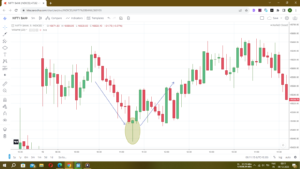What is a Market Cap Understanding the Basics – Investing in the financial markets can be a lucrative endeavor, but it requires a solid understanding of various concepts. One such concept that plays a significant role in evaluating companies and their stocks is market capitalization, often referred to as market cap. In this article, we will delve into the definition, calculation, and significance of market cap, shedding light on its importance in the investment world.
What is Market Cap?
Market capitalization, often abbreviated as market cap, is a metric used to determine the total value of a publicly traded company. It represents the market’s perception of a company’s worth based on the combined value of all its outstanding shares. In simpler terms, market cap provides an estimation of the market value of a company as determined by investors.
How is Market Cap Calculated?
To calculate market cap, one needs to multiply the current market price of a company’s stock by the total number of outstanding shares. The formula for market cap is as follows:
Market Cap = Current Stock Price x Outstanding Shares
For example, if a company has 1 million outstanding shares and the current stock price is $50, the market cap would be $50 million.
Market Cap Categories
Market cap is commonly used to categorize companies into different size brackets. While the cutoffs may vary, the most widely accepted classifications are:
- Large-cap: Companies with a market cap of over $10 billion.
- Mid-cap: Companies with a market cap between $2 billion and $10 billion.
- Small-cap: Companies with a market cap between $300 million and $2 billion.
- Micro-cap: Companies with a market cap between $50 million and $300 million.
- Nano-cap: Companies with a market cap below $50 million.
These categories provide investors with a quick way to assess a company’s size and potential risk-return profile.
Significance of Market Cap
Market cap serves as an important indicator for investors and analysts. It helps in assessing the relative size and importance of a company within the market. The significance of market cap can be understood through the following points:
- Investment Decision-making: Market cap plays a crucial role in determining which companies are suitable for different investment strategies. Investors with different risk appetites often prefer companies with varying market caps.
- Benchmarking: Market cap is used as a benchmark to compare companies within the same industry or sector. It provides a relative measure of a company’s size and performance.
- Market Indices: Market cap is a key factor in constructing market indices such as the S&P 500 or the Dow Jones Industrial Average. These indices are widely followed by investors and serve as indicators of overall market performance.
- Liquidity and Volatility: Market cap can also provide insights into the liquidity and volatility of a stock. Generally, larger companies with higher market caps tend to have higher liquidity and lower volatility.
Factors Influencing Market Cap
Several factors influence a company’s market cap. Understanding these factors can help investors make informed decisions. The key factors include:
- Earnings and Revenue: A company’s financial performance, including its earnings growth and revenue generation, can significantly impact its market cap. Strong earnings and revenue growth often lead to an increase in market cap.
- Investor Sentiment: Market cap can be influenced by investor sentiment and market dynamics. Positive news, investor confidence, and overall market conditions can drive market caps higher.
- Industry Trends: Market cap can be affected by industry trends and technological advancements. Companies operating in sectors with high growth potential often experience an increase in market cap.
- Competition and Market Share: The competitive landscape and a company’s market share can influence its market cap. Companies with a dominant position in their industry tend to have higher market caps.
Market Cap and Investment Strategies
Investors adopt different investment strategies based on the market caps of companies. Here are a few common strategies:
- Growth Investing: Growth investors seek companies with high potential for future growth. They often focus on small-cap or mid-cap stocks, as these companies have more room for expansion.
- Value Investing: Value investors look for companies that are undervalued by the market. They often target large-cap or mid-cap stocks that are trading below their intrinsic value.
- Income Investing: Income investors prefer stable and established companies that offer regular dividends. These companies are typically found in the large-cap category.
- Index Investing: Index investors aim to replicate the performance of a specific market index. They invest in a diverse range of companies based on their market cap weightings within the index.
Market Cap and Risk Assessment
Market cap can provide insights into the risk associated with investing in a particular company. While risk is subjective and varies from investor to investor, the following generalizations can be made:
- Large-cap Stocks: Generally considered less risky due to their size, stability, and established market position. They often offer lower potential returns compared to smaller companies.
- Small-cap and Micro-cap Stocks: These stocks tend to be more volatile and carry higher risk. However, they also have the potential for substantial growth and higher returns.
- Market Conditions: Market cap can be influenced by overall market conditions. During periods of market volatility, smaller companies with lower market caps may experience more significant price swings.
Market Cap Limitations
While market cap is a useful metric, it does have its limitations:
- Dynamic Nature: Market cap is subject to change as stock prices fluctuate and companies issue new shares or buy back existing ones. Investors should regularly reassess a company’s market cap for up-to-date information.
- Limited Perspective: Market cap provides a snapshot of a company’s value based solely on its stock price and outstanding shares. It doesn’t consider other factors like debt, cash reserves, or potential growth opportunities.
- Industry Variations: Different industries have different market cap norms. Comparing market caps across industries may not always provide accurate insights.
Comparing Market Caps
When comparing market caps, it’s essential to consider factors such as the company’s industry, growth prospects, and financial performance. A higher market cap doesn’t necessarily mean a better investment. Investors should analyze multiple factors before making investment decisions.
Market Cap and Stock Indexes
Market cap plays a vital role in constructing stock market indexes. The weighting of individual stocks within an index is typically based on their market cap. This approach ensures that larger companies have a more significant impact on the index’s overall performance.
Market Cap and Market Volatility
Market cap can influence market volatility, especially in smaller stocks with lower market caps. During periods of uncertainty or market-wide selling, smaller companies may experience sharper price declines compared to larger, more stable companies.
Market Cap and Market Manipulation
Market cap can make smaller companies susceptible to market manipulation. Illiquid stocks with low market caps can be easily manipulated by traders looking to create artificial price movements. Investors should exercise caution when investing in such stocks.
Market Cap and Company Size
Market cap is often used as a measure of a company’s size and stature within the market. It helps investors gauge the relative importance and influence of a company compared to its peers.
Market Cap and Industry Analysis
Analyzing market caps within specific industries can provide insights into industry trends, competitive landscapes, and growth potential. Investors can use market cap data to identify emerging sectors or assess the dominance of established players.
Conclusion
Market cap is a vital metric used in the financial world to evaluate companies and their stocks. It provides a snapshot of a company’s value and is influenced by various factors such as earnings, investor sentiment, and industry trends. Understanding market cap can assist investors in making informed investment decisions and assessing the risk-return profile of different stocks.
FAQs (Frequently Asked Questions)
1. Is market cap the same as a company’s worth?
No, market cap represents the market’s perception of a company’s worth, but it may not reflect its true intrinsic value.
2. Can market cap change over time?
Yes, market cap is dynamic and can change as stock prices fluctuate and companies issue new shares or buy back existing ones.
3. Are larger companies always better investments due to their higher market caps?
Not necessarily. The suitability of an investment depends on various factors, including the investor’s goals, risk appetite, and the company’s financial performance.
4. Are small-cap stocks riskier than large-cap stocks?
Small-cap stocks tend to be more volatile and carry higher risk compared to large-cap stocks. However, they may also offer greater growth potential.
5. How can market cap help in portfolio diversification?
Market cap can help investors diversify their portfolios by investing in companies of different sizes, which may have varying risk-return profiles.




